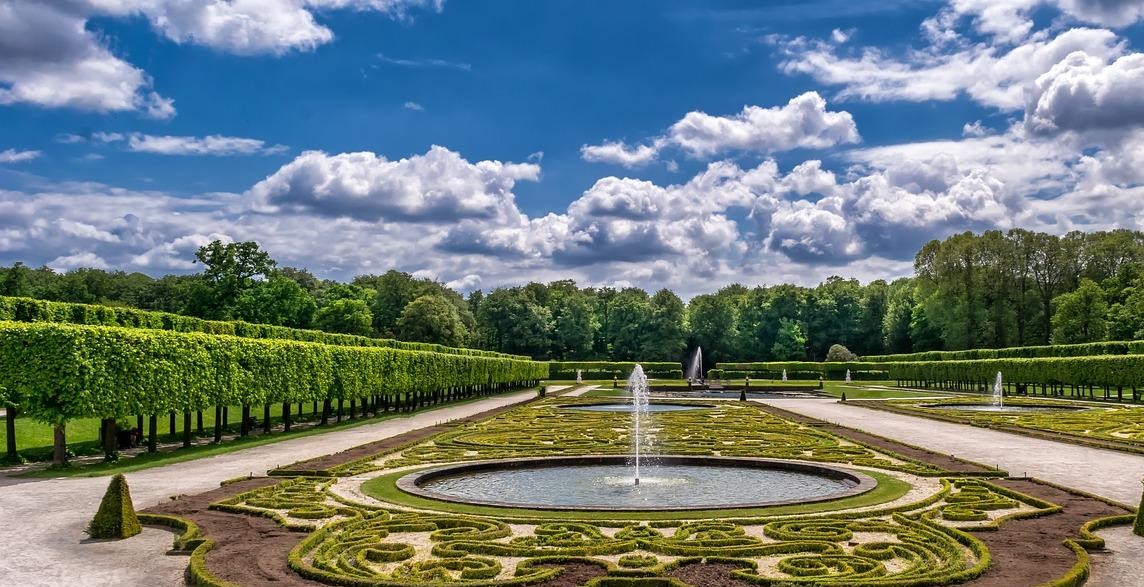Introduction: How to Design Your Dream Garden Landscape
Gardening is a rewarding activity that brings beauty and tranquility to any home. However, designing a garden landscape can be a daunting task, especially if you don’t know where to start. A well-designed garden landscape can transform your outdoor space into a peaceful haven that reflects your personality and style.
Why is garden landscape design important?
Garden landscape design is important for several reasons. Firstly, it adds value to your property. A well-designed garden can increase the curb appeal of your home, making it more attractive to potential buyers. Secondly, it creates a functional outdoor space that can be used for various activities such as entertaining guests, gardening, or simply relaxing. Thirdly, a well-designed garden landscape can improve your mental and physical well-being by providing a peaceful and serene environment.
Designing your dream garden landscape requires careful planning and consideration of various factors such as the size and shape of your outdoor space, the type of plants and flowers you want to grow, and the overall style and theme you want to create. With the right guidance and tools, you can create a beautiful garden landscape that you can enjoy for years to come.
In this article, we will provide you with practical tips and advice on how to design your dream garden landscape. From choosing the right plants to creating a functional layout, we will guide you through the entire process to help you create a stunning outdoor space that you can be proud of.
Step 1: Assess Your Space
Designing your dream garden landscape involves a lot of planning and preparation. Before you start, it’s important to assess your space to make sure you can create a garden that meets your needs and suits your style. Here are some things to consider:
Measure Your Space
The first step in assessing your space is to measure it. This will help you determine the size and shape of your garden, as well as any potential obstacles or features that may affect your design. Use a tape measure or laser level to measure the length and width of your garden, and note any irregularities or changes in elevation.
Consider the Sun Exposure
The amount of sun exposure your garden receives will affect the types of plants you can grow and where you can place them. Take note of which areas of your garden receive full sun, partial sun, or shade throughout the day. Use this information to plan your garden layout and choose plants that are suitable for each area.
Take Note of Existing Features
Your garden may already have existing features that you want to incorporate into your design. These could include trees, shrubs, or other landscaping elements. Take note of these features and think about how you can use them to enhance your garden. You’ll also want to consider any structures or obstacles, such as fences or utility boxes, that may limit your design options.
By taking the time to assess your space, you’ll be able to create a garden that’s both functional and beautiful. Use this information to start planning your dream garden landscape today.

Step 2: Choose Your Style
Before starting to design your dream garden landscape, it is important to choose the right style. The style you choose will determine the overall look and feel of your outdoor space. There are several factors to consider when selecting a garden style:
Research Garden Styles
Researching different garden styles will help you identify what appeals to you and what will work well with your home’s architecture. Some popular garden styles include:
- Formal Garden
- Cottage Garden
- Japanese Garden
- Mediterranean Garden
- Tropical Garden
Each style has its own unique features and characteristics, so it is essential to choose a style that matches your personality and preferences.
Consider Your Home’s Architecture
When choosing a garden style, it is important to consider your home’s architecture. The garden should complement the style of your home and enhance its overall aesthetic appeal. For example, if you have a modern home, a minimalist garden with clean lines and geometric shapes may be the best fit.
Think About Your Lifestyle
Your lifestyle should also play a role in selecting a garden style. If you enjoy entertaining guests, a garden with a large patio and outdoor kitchen may be ideal. If you have children or pets, you may want to incorporate a play area or pet-friendly features into your garden design.
By taking the time to research garden styles, considering your home’s architecture, and thinking about your lifestyle, you can choose a garden style that meets your needs and reflects your personality.

Step 3: Plan Your Layout
Once you have determined your garden’s purpose and style, it’s time to plan your layout. This step involves creating a rough sketch of your garden design, mapping out your hardscape, and planning your planting beds.
Create a Rough Sketch
The first step in planning your layout is to create a rough sketch of your garden. This sketch should include the location of any existing features, such as trees, shrubs, or buildings, as well as any new features you plan to add. You can use graph paper to create a scale drawing of your garden, or simply sketch out your ideas on a piece of paper.
Map out Your Hardscape
Next, you’ll want to map out your hardscape. This includes any permanent features in your garden, such as patios, walkways, walls, or water features. These elements should be carefully placed to enhance the flow and functionality of your garden. Consider factors such as sun exposure, privacy, and views when deciding on the placement of your hardscape.
Plan Your Planting Beds
Finally, it’s time to plan your planting beds. Consider the types of plants you want to include in your garden, as well as their growing requirements. Group plants with similar needs together, and consider factors such as color, texture, and bloom time when selecting plants for your garden. Be sure to leave enough space between plants to allow for growth, and consider adding mulch or ground cover to help conserve water and suppress weeds.
| Pro Tip: | Consider using a garden design software to help you plan your layout. These programs can help you create a detailed blueprint of your garden, and allow you to experiment with different layouts and features before committing to a final design. |
|---|

Step 4: Select Your Plants
Choosing the right plants is one of the most important steps in designing your dream garden landscape. Here are some factors to consider:
Choose Plants That Thrive in Your Climate
When selecting plants, it’s essential to consider your climate. Choose plants that are native to your region or that thrive in your particular climate. This will ensure that your garden remains healthy and beautiful throughout the year.
Consider Colors and Textures
When selecting plants for your garden, consider their colors and textures. Choose plants that complement each other and create a cohesive look. Mix and match different textures to add visual interest to your garden.
Plan for Year-Round Interest
Plan your garden to have year-round interest. Choose plants that bloom at different times of the year, so there is always something in bloom. Consider adding evergreen shrubs or trees to provide structure and interest during the winter months.
Make a List
Make a list of the plants you want to include in your garden. Consider their size, growth rate, and maintenance requirements. Group plants with similar needs together to make watering and fertilizing more manageable.
| Plant Name | Size | Growth Rate | Maintenance |
|---|---|---|---|
| Lavender | 18 inches tall | Slow | Low |
| Hydrangea | 3-6 feet tall | Medium | Moderate |
| Hosta | 1-3 feet tall | Slow | Low |
By following these tips, you can create a beautiful and thriving garden that you can enjoy for years to come.
Step 5: Add Finishing Touches
Now that you have planned and executed the main elements of your dream garden landscape, it’s time to add the finishing touches that will truly make it your own. Here are some ideas to incorporate:
Incorporate Garden Decor
Garden decor such as sculptures, fountains, and bird baths can add an extra layer of personality to your garden landscape. Choose pieces that complement the overall aesthetic of your garden and reflect your personal style.
Add Lighting for Ambiance
Outdoor lighting can create a beautiful ambiance in your garden landscape, especially in the evening. Consider adding string lights, pathway lights, or even spotlights to highlight specific elements of your garden.
Consider Water Features
Water features like ponds, waterfalls, and streams can add a tranquil and calming element to your garden landscape. They also attract birds and other wildlife, making your garden a peaceful sanctuary for all to enjoy.
- Choose a water feature that fits the size and style of your garden
- Consider the maintenance required for upkeep
- Add aquatic plants and fish to enhance the natural feel
With these finishing touches, your dream garden landscape will be complete. Enjoy your beautiful outdoor oasis!

Conclusion
Designing your dream garden landscape can be a fun and rewarding experience. By following the steps outlined in this article, you can create a beautiful and functional outdoor space that you will enjoy for years to come.
Remember the Basics
When designing your garden landscape, it is important to keep in mind the basic principles of design. These include balance, proportion, unity, rhythm, and emphasis. By incorporating these principles into your design, you can create a cohesive and visually pleasing outdoor space.
Consider Your Needs and Wants
Before you start designing your garden landscape, take some time to consider your needs and wants. Think about how you want to use the space, what features are important to you, and what style or theme you want to achieve. By doing so, you can create a garden landscape that is tailored to your specific needs and preferences.
Get Creative
Don’t be afraid to think outside the box and get creative with your garden landscape design. Incorporate unique features, such as water features, sculptures, or lighting, to add interest and personality to your outdoor space.
Consult with a Professional
If you are unsure about how to design your dream garden landscape, consider consulting with a professional landscaper or garden designer. They can offer expert advice and help you create a design that meets your needs and fits your budget.
In conclusion, designing your dream garden landscape is a fun and exciting process that can transform your outdoor space into a beautiful and functional oasis. By following the tips and guidelines outlined in this article, you can create a garden landscape that you will love for years to come.
